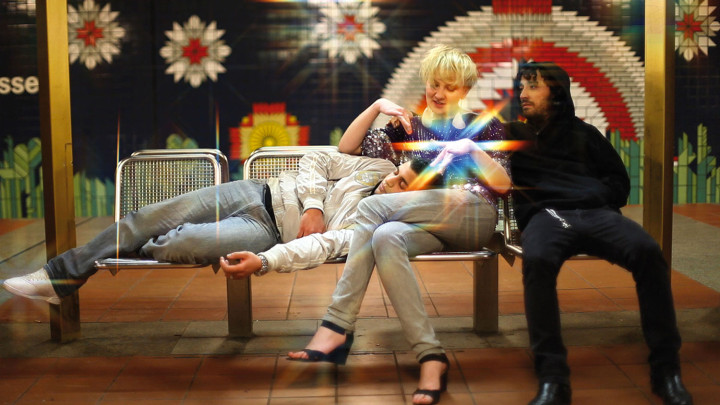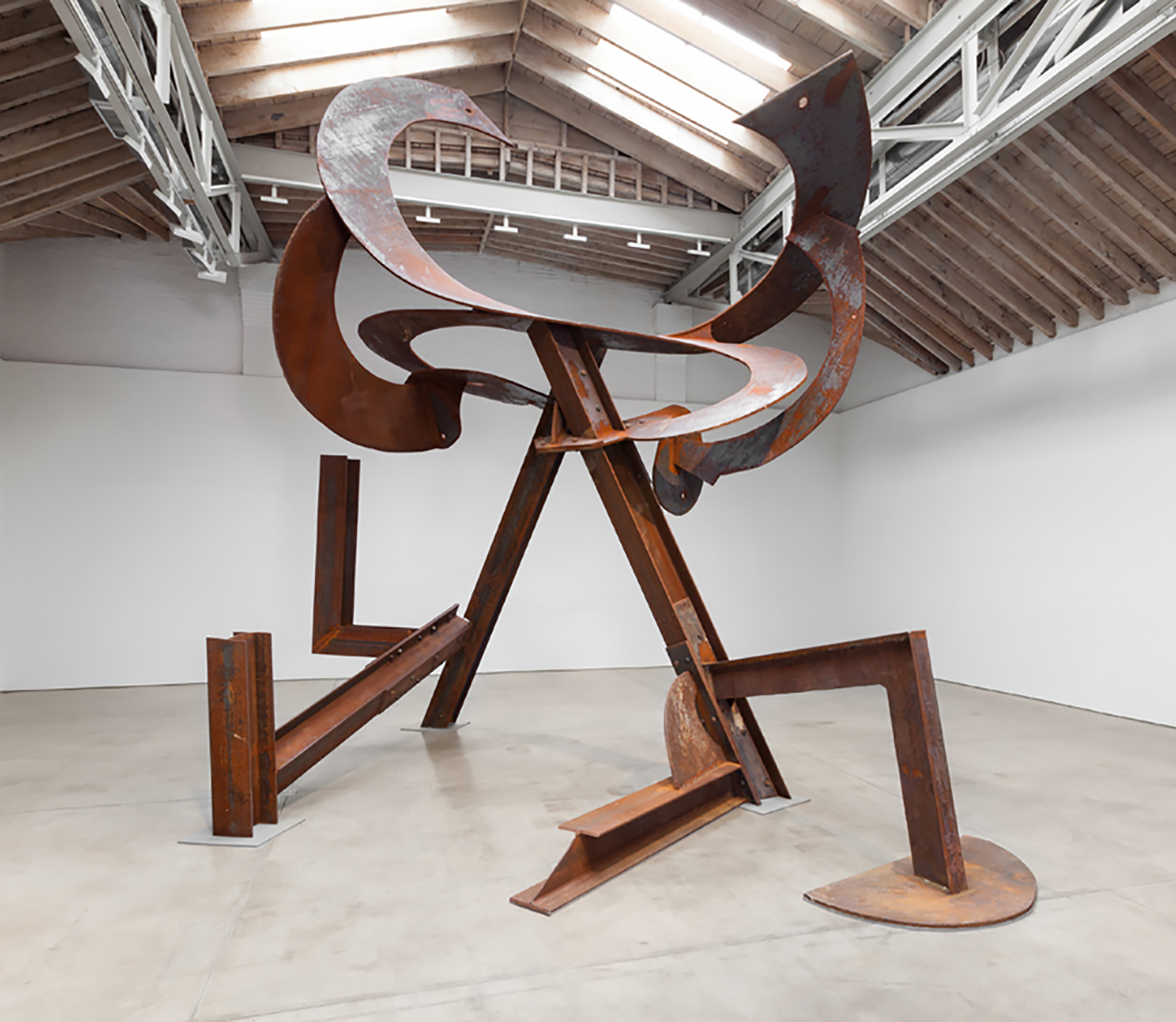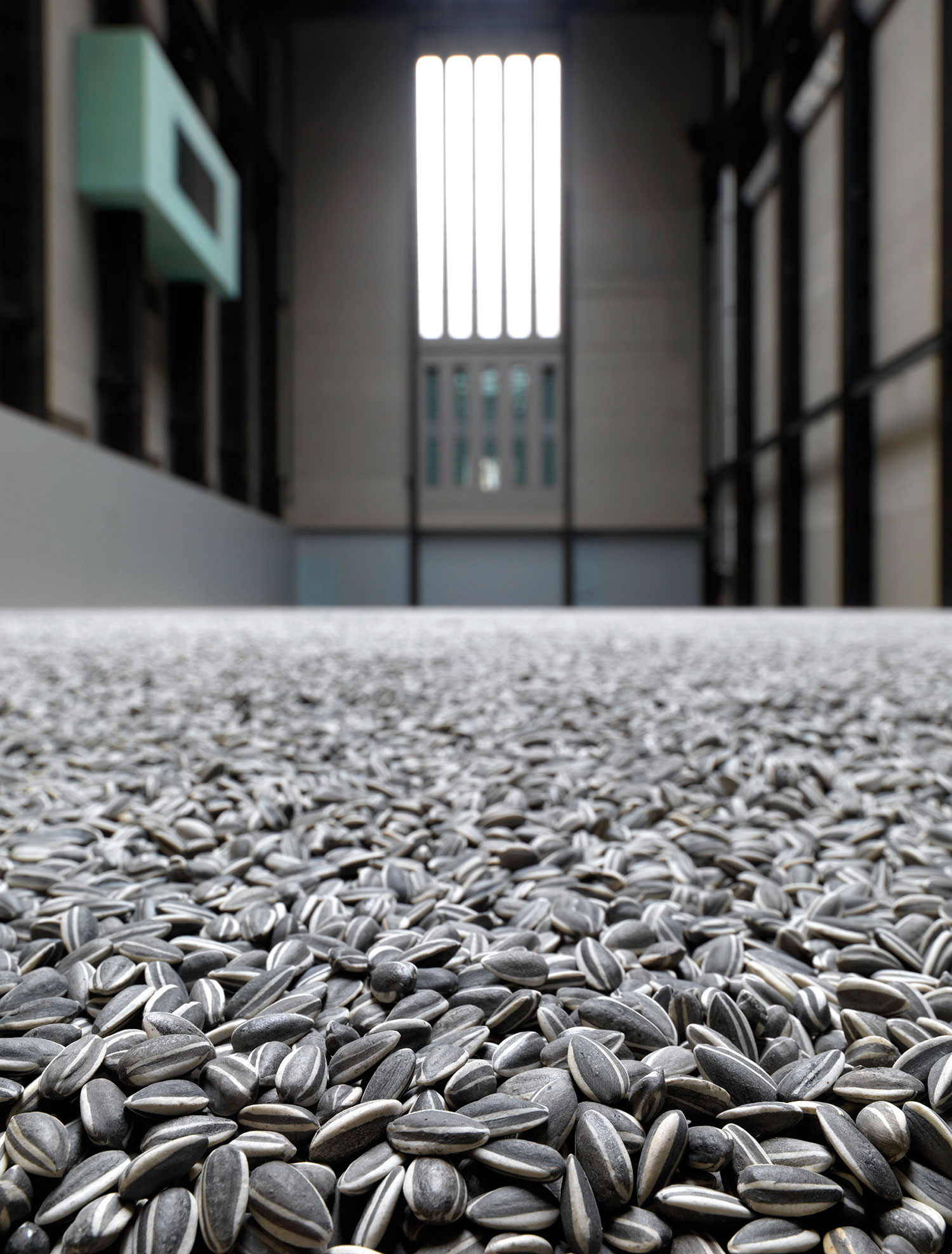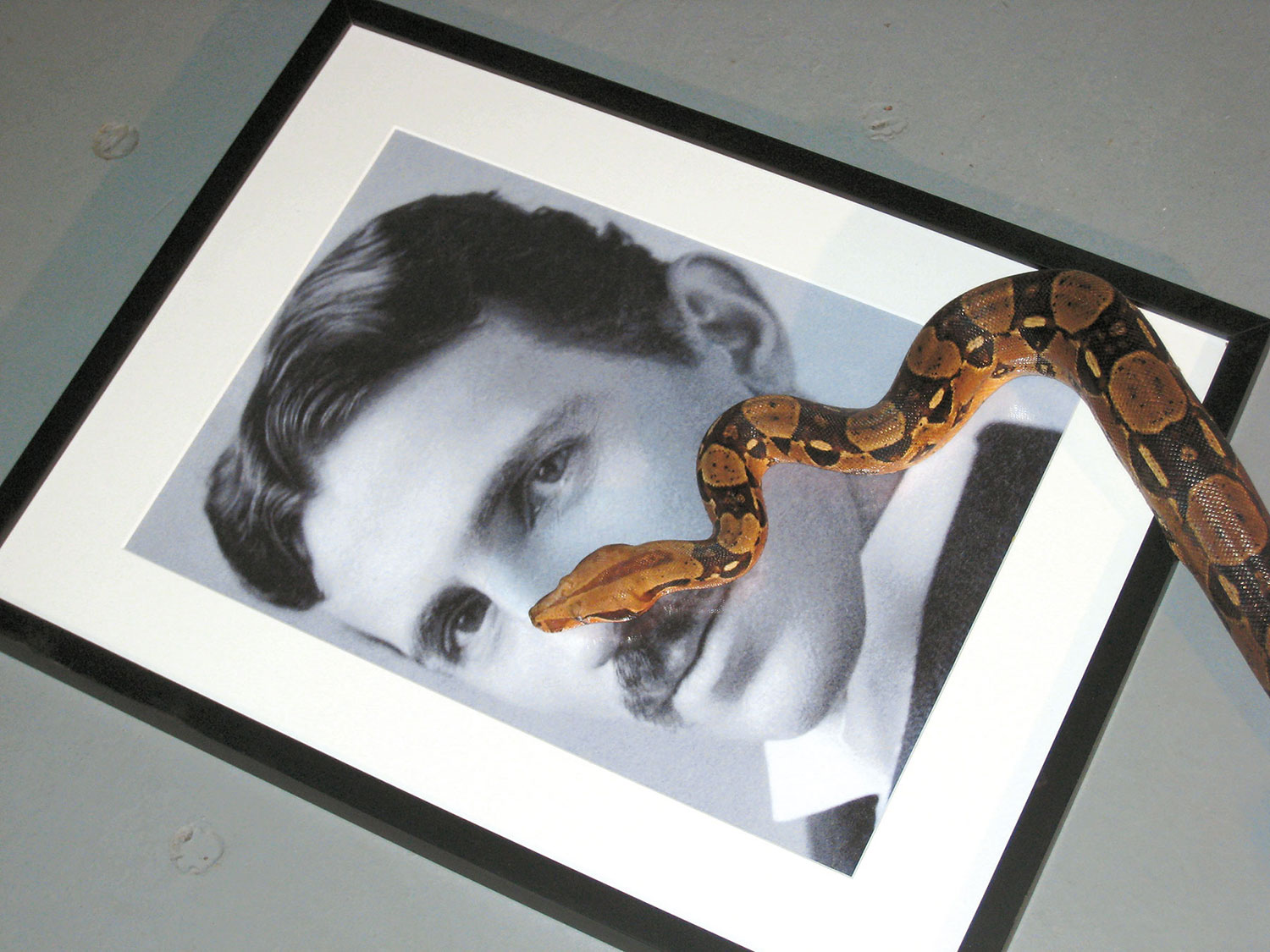
Ian Hunt: Before Nyx (2010) you made Nach Spandau (2008), also made in the U-Bahn, Berlin’s metro. What is their relationship?
Claire Hooper: Nach Spandau is about the U7 line, designed by Rainer G. Rümmler. I was making it at night alone on the station platforms. It gave me time to think, especially about the experience of night. How does one define night when there is no moon or stars? No darkness? Underground stations are perennially lit in the same way and the machinery functions rhythmically; what changes significantly is people’s behavior. Nach Spandau was about the architecture of the U7 itself and the progression of Rümmler’s designs, but in pursuing this I was observing the drunken teenagers and street people (using the U-Bahn for shelter), insomniacs, night cleaners as performers.
IH: Nyx quickly takes on a mythical character, but the names of the characters aren’t given until the credits. What sources in myth are you drawing on?
CH: I like superhero films, and TV programs like “Misfits,” where ASBO kids get superpowers. The narratives of Greek mythology exist in every corner of Western culture, but it’s irrelevant how much you formally ‘know’ of it. What’s important is the way in which the presence of the gods acts upon the passive observer or the random pedestrian.
IH: The two identical figures in the train carriage, who are they?
CH: Twin brothers Thanatos and Hypnos; Thanatos represents Quiet Death, as in passing away in your sleep, and Hypnos is Sleep. Furat, my Odysseus, is sleeping on the U-Bahn, or perhaps he’s been drugged, and this could be his dream, hallucination or even what is actually happening, if you can suspend disbelief. Furat is wavering between Sleep and Death.
IH: You chose to work with young people in Berlin.
CH: The cast is mostly Kurdish, from Berlin’s Kreuzberg district. A lot of the research for Nyx was conversations with people about the bringing of Mesopotamian, pre-Muslim culture, to a city which contains the Pergamon Altar and the Ishtar Gate.

IH: The Pergamon Museum is one of the only above-ground places the film shows. It brings out the social factors of the casting: the young man is suddenly in the place of middle-class ritual par excellence, the museum.
CH: Furat kept wandering off between takes to study the Ishtar Gate without the crowd. He is a regular kid; a rapper from Kreuzberg who speaks five languages and knows ancient history like we know Cinderella. He doesn’t think the Pergamon Museum is middle class, he thinks it belongs to him!
IH: The film has a density to it, but it puts you in the position of just missing the significance of things.
CH: It does, but some of it is obvious too I hope, like showing Nemesis and her Furies as a girl gang. After Nach Spandau, which was very long and required you to lose concentration, I wanted to do something that made people alert and focused, and to miss things nevertheless. It’s made in the same location, but it has all the things you didn’t see in the earlier film. [The musical score to Nach Spandau was composed by Beatrice Dillon].





